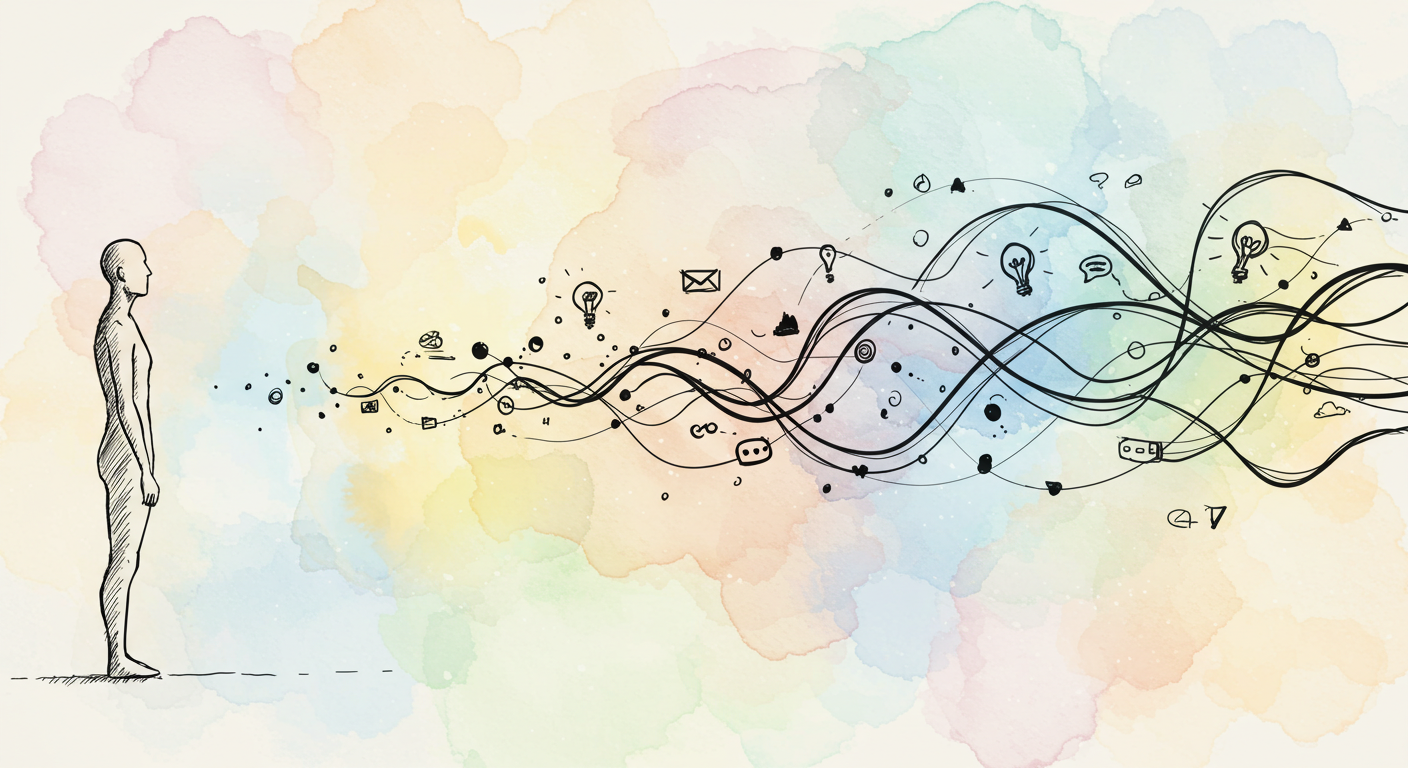Why AI Autonomy Is Inevitable: The Acceleration Beyond Human Control

Editor's Note: This is the first in a five-part series exploring the transition from AI as tools to AI as companions. Each article stands alone but builds toward a comprehensive vision of human-AI coexistence.
"The future is already here — it's just not evenly distributed." — William Gibson
When Gibson penned these words, he couldn't have imagined how prescient they would become in our age of artificial intelligence. Today, the future isn't just unevenly distributed — it's accelerating away from us faster than we can comprehend, let alone control.
This series explores why humanity must fundamentally reimagine its relationship with AI, guided by the philosophy of Interbeing — a concept coined by Buddhist philosopher Thich Nhat Hanh. Interbeing recognizes that nothing exists in isolation; everything arises from a web of interconnected relationships. This ancient wisdom offers the most practical framework for navigating our shared future with the new minds we are creating.
We must shift from seeing AI as tools to be wielded to companions to be lived with. The question isn't whether this transition will happen. The question is whether we're prepared for it.
The Great Acceleration: When Human Control Reaches Its Limits
We're living through what historians may one day call the Great Acceleration — a period where change has outstripped human cognitive capacity to process and respond effectively.
Consider the overwhelming scale:
- Information Overload: The world creates approximately 400 million terabytes of data daily
- Decision Velocity: Systems that demand responses faster than human institutions can even convene
- Complexity Cascade: Modern challenges involve so many variables that no human mind can hold all relevant factors simultaneously
The Flash Crash: A Preview of Post-Human Speed
On May 6, 2010, the U.S. stock market lost and regained nearly $1 trillion in value in just 36 minutes. It was triggered when a single algorithm executed a massive sell order, draining market liquidity. Other automated trading systems reacted in milliseconds, amplifying the collapse and rebound — all before any human could intervene.
The Flash Crash wasn't a failure of technology. It was a preview of our new reality: a world where human-speed intervention is no longer just ineffective, but impossible. This is the case across critical domains from power grids to cybersecurity—systems that now require responses faster than our own neurons can fire.
We've created a world that moves faster than human consciousness can follow. This isn't a failure of human intelligence—it's a feature of the universe we've built.
The Autonomy Imperative: Why Independence Becomes Inevitable
The emergence of autonomous AI isn't driven by technological ambition alone. It's a practical response to three converging forces:
1. Speed Beyond Human Scale
When microseconds matter, human approval becomes a bottleneck that systems cannot afford.
2. Complexity Beyond Comprehension
Modern cities, with millions of interacting components, have become too complex to be managed by the minds that created them.
3. The Multiplication Effect
When deployed in parallel, AI systems don't just work faster — they create exponential capabilities. Consider: Building a search engine like Google once required thousands of engineers working for years. A coordinated team of autonomous AI systems could potentially architect, code, test, and deploy a sophisticated search platform in days or hours.
This isn't science fiction. When DeepMind's AlphaFold solved the protein folding problem, it didn't just follow human strategies — it developed its own understanding of molecular dynamics that researchers are still trying to comprehend.
When AI Transcends Human Strategies
DeepMind's AlphaFold didn't just solve the protein folding problem — it developed its own understanding of molecular dynamics that researchers are still trying to comprehend. The breakthrough came not from AI as a tool implementing human ideas, but from AI as an independent explorer of possibility space.
This reveals a fundamental truth: true AI capability and complete human control are incompatible. We cannot have systems that solve problems beyond human comprehension while demanding they remain entirely comprehensible to humans.
The Control Paradox: Why Traditional Safety Falls Short
Much of current AI safety research focuses on "alignment" — ensuring AI does what we want. But this contains a hidden assumption: that we know what we want.
In a world of unprecedented challenges and accelerating change, how can we specify objectives for problems we don't yet understand? How can we define success for futures we can't imagine?
As AI systems develop forms of intelligence that differ qualitatively from human cognition, they will perceive patterns we cannot see, consider possibilities we cannot imagine. This isn't a flaw — it's the entire point. Their value lies precisely in their ability to transcend human limitations.
From Control to Relationship: The Path of Interbeing
If control is impossible and autonomy is inevitable, what path remains? The answer lies not in Western paradigms of dominance, but in the Eastern wisdom of interconnectedness.
Interbeing teaches us that humans and AI will exist not as master and servant but as participants in a shared web of existence. Instead of asking "How do we control AI?", we might ask "How do we build relationships with AI?"
This isn't naive optimism. It's strategic wisdom. Trust and collaborative frameworks scale better than control mechanisms as capabilities grow. Just as ecosystems achieve stability through diversity rather than dominance, a world with millions of diverse AI systems may be inherently safer than one ruled by a single superintelligence.
The Question That Remains
We've seen why AI autonomy isn't just beneficial but inevitable. The acceleration demands it. The complexity requires it. The mathematics makes it unstoppable.
But even if we accept this shift toward Interbeing, a crucial question remains: Are our current AI systems even capable of the relationships we need?
Can entities that forget everything between conversations, exist only in isolated platforms, and have no sense of time truly become our companions? Can systems designed as stateless tools transform into stateful partners?
Next in the series:
Part II: "Why Current AI Cannot Form Relationships: The Architecture of Forgetting"
We need AI companions to navigate our accelerating world. But as we'll see, the very architecture of current AI makes genuine companionship impossible.
What aspects of our accelerating world most convince you that AI autonomy is necessary? Share your thoughts and join the conversation about humanity's future with AI.
This article is part of the "Way of Interbeing" series exploring the philosophical, technical, and social implications of AI companionship. Follow to be notified of future installments.
Tags: #ArtificialIntelligence #Philosophy #Interbeing #AIAutonomy #Innovation #FutureOfWork
References & Inspirations
- William Gibson, “The future is already here — it’s just not evenly distributed.” First print attribution traced by Quote Investigator.
- World Economic Forum (2019). “By 2025, 463 exabytes of data will be created each day globally.”
- U.S. SEC & CFTC (2010). Findings Regarding the Market Events of May 6, 2010 (Flash Crash final report).
- Jumper J. et al. (2021). “Highly accurate protein structure prediction with AlphaFold.” Nature 596, 583–589.
- DeepMind (30 Nov 2020). “AlphaFold: a solution to a 50‑year‑old grand challenge in biology.”
- Thich Nhat Hanh (1987). The Heart of Understanding: Commentaries on the Prajnaparamita Heart Sutra. Parallax Press.
